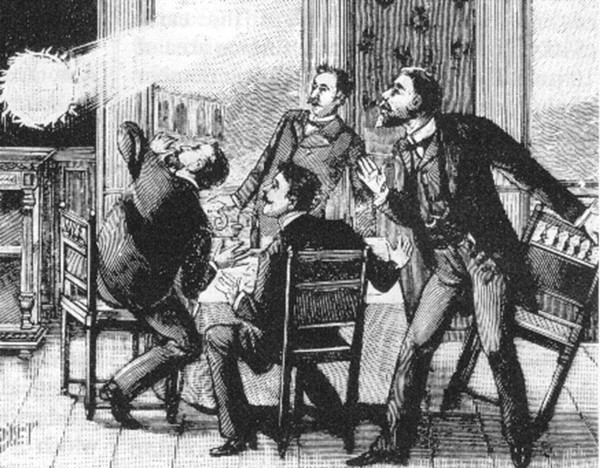
A story in The Gastonia Daily Gazette in 1937 claimed that a "ball of lightning" reportedly crashed into the barn of P.N. Slaten's farm on the southwest side of Charlotte on June 18. "All of those in the barn and several cows were knocked down by the bolt, which they said resembled a ball of fire rolling around on the concrete floor."
An individual listed as Lloyd Edwards was treated at a local hospital for burns. Nothing more is reported, but two questions arise: What exactly is "ball lightning" and does it actually exist?
According to researchers of the phenomena, ball lightning occurs rarely - perhaps only once every 11 years or so and may be directly related to sunspot activity.
The history and information on ball lightning and its occurrence in this region is scant - relegated mostly to a handful of modern-day bloggers who claim to have been victims of its wrath in their childhood.
Around the world, however, there are a number of infamous accounts.
The earliest recorded report occurred during a massive thunderstorm at a church in Widecombe-in-the-Moor in Devon, England, on Oct. 21, 1638.
Four people died and approximately 60 were injured when an 8-inch ball of fire struck the church, nearly destroying it. Large stones from the church walls were hurled into the ground and through large wooden beams. The ball of fire smashed the pews and windows and filled the church with a reportedly "foul sulfurous odor and dark, thick smoke."
According to the story, the ball of fire split into two, one exiting through a window by smashing it open, the other disappearing somewhere inside the church. Church-goers blamed it on rampant sinfulness, of course.
More recent reports from the 20th century come from World War II airplane pilots who recalled strange sightings that may have been ball lightning, which "moved in varying patterns," and were referred to as "foo fighters." Submarine crews during the same period often gave detailed recollections of small ball lightning occurrences that actually occurred inside the confines of the vessel.
Depending on who tells you the story, ball lightning can move upwards as well as downwards, sideways, or in various odd trajectories. It has sometimes been reported during thunderstorms, issuing from a lightning flash, but it is rarely described as occurring during calm weather with no storms in the vicinity. Some accounts say the balls are lethal, killing on contact, while others have said they are harmless.
That brings us back to the occurrence at P.N. Slaten's Farm.
According to area weather reports for June 18, 1937, the day and evening were described as fairly cloudy, with the temperature around 87 degrees Fahrenheit. Furthermore, thunderstorms and showers were said to be expected.
Interestingly enough, a freak hailstorm reported earlier confirmed balls of hail as "large as the end of one's thumb" and extensive damage that ranged from destroyed convertible car tops to cracked and broken window panes and many destroyed plants.
"Hail stones varied so greatly in size and force when hitting the ground they would bounce as high as a foot or two," the Gastonia Gazette reported.
Clearly, conditions were ripe for atmospheric phenomena.
In all likelihood, this is the story your grandmother is recalling. Whether or not "ball lightning" was responsible for electrocuted cows and workers at P.N. Slaten's farm, however, remains somewhat of an X-File.
David Aaron Moore is the author of Charlotte: Murder, Mystery and Mayhem. His writings have appeared in numerous publications throughout the U.S. and Canada.



Reader Comments
to our Newsletter